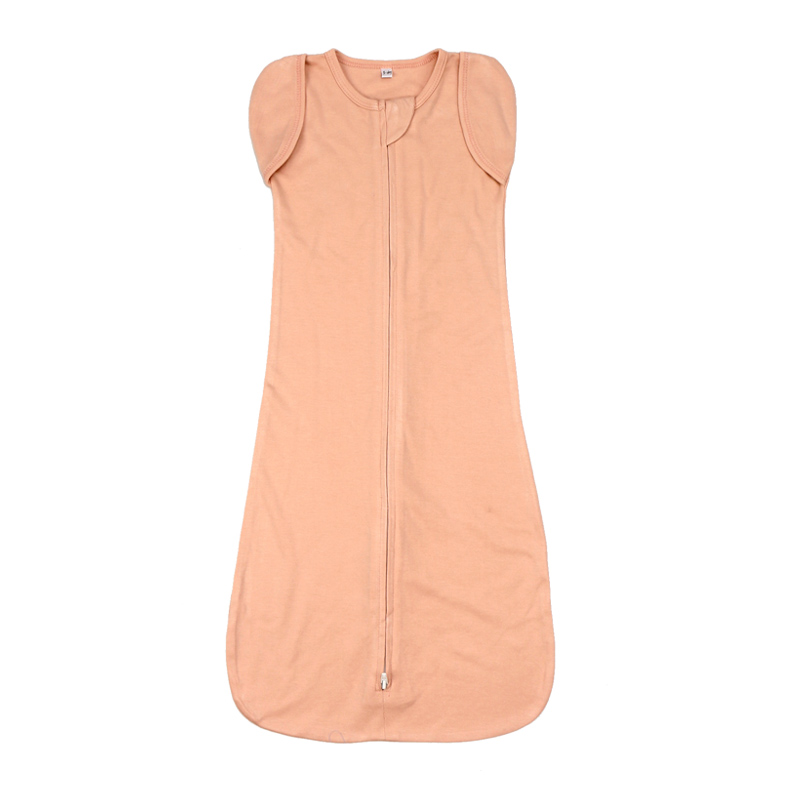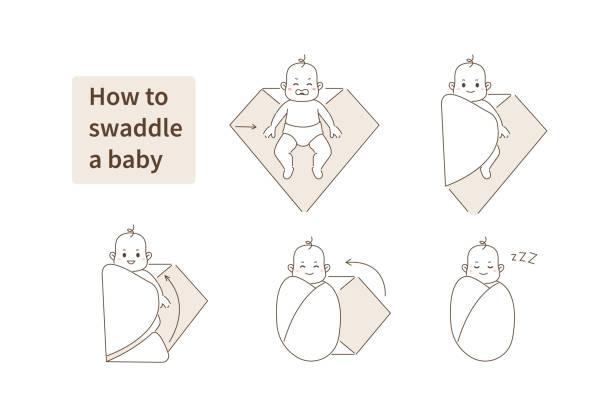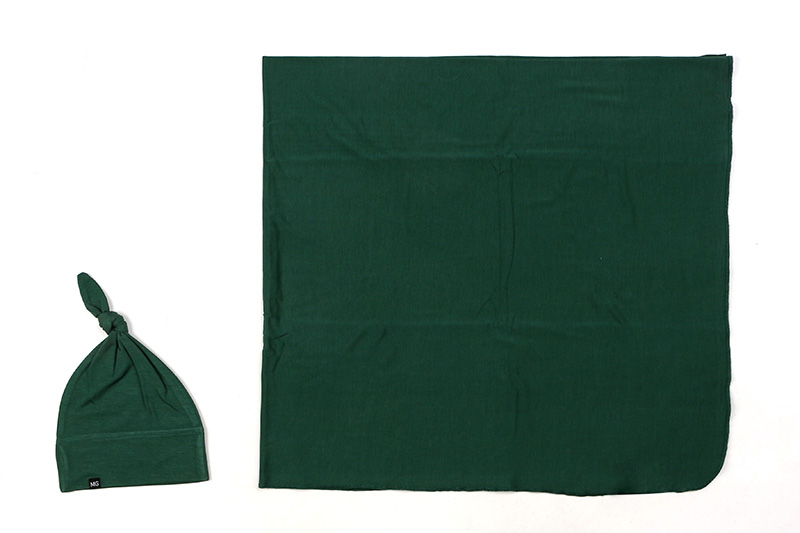
Key Takeaways for better baby sleep
Swaddling is incredibly easy and has many great benefits. In addition to keeping your baby warm and safe-feeling, swaddling can reduce reflexive movements that may disrupt their sleep.
Here we lay out step-by-step how to swaddle your baby. To start, all you need is a soft swaddling blanket – and your baby, of course!
Two tips: swaddle your baby with their arms to their sides and leave enough space around your baby’s hips so they can move them. Also, stop swaddling when your baby starts to roll over, which is usually around 2 months.
Swaddling can be beneficial for your baby in her early months. Learn more about this soothing technique used for newborns, and get answers to some of the most frequently asked questions about swaddling, including how to swaddle your baby step by step, what the benefits of swaddling are, and how long you can safely swaddle your baby.

What Is Swaddling?
Swaddling is a simple technique in which you wrap your baby up in a swaddle blanket in order to soothe him. You might even think of your swaddled little one as a baby burrito!
What Are the Benefits of Swaddling?
The benefits of swaddling include:
Helping to keep your baby warm when she’s sleeping
Limiting the startle reflex, which can wake your baby during sleep
Providing her with a sense of safety and security by mimicking the snug environment of the womb
Helping keep your baby calm, possibly even when your baby has colic
Comforting your baby during something that can be a little uncomfortable, like a vaccination, for example.
What Kind of Swaddle Should You Use for Your Baby?
A swaddle blanket can be made of 100% organic cotton, 100% bamboo.Fabric type :jersey, muslin. It’s a good idea to choose a fabric that allows for breathability, which can help keep your baby from overheating.

Besides swaddle blankets, you can also find wraps or sleeping sacks on the market, which may be easier to use.

How Do You Swaddle Your Baby Step by Step?
To swaddle your baby, you’ll want to know the safe and proper swaddling technique. Follow this infographic and the instructions below for a step-by-step guide on how to swaddle your baby.

How to swaddle your baby step by step:
1.Spread the blanket out flat on a changing table, bed, or the floor, and fold over one of the corners.
2.Lay your baby face-up on the blanket positioned with his head at the folded corner.
3.Wrap the right corner over your baby (with his right arm straight down by his side), and tuck the end of the blanket underneath him.
4.Bring the bottom corner of the blanket up over his feet.
5.Wrap the left corner over your baby (with his left arm straight down by his side), leaving just his head and neck exposed.
6.Check that the blanket isn’t too tight or constricting around his hips and legs, and that his lower body can still move about. Wrapping your baby too tightly in a swaddle can lead to hip dysplasia or dislocation.
When Should You Swaddle Your Newborn?
You can swaddle your newborn for nighttime sleep, for a nap, or when she needs some soothing due to colic. Swaddling can help your baby stay warm, calm, and secure. And at bedtime or naptime, swaddling can help promote better sleep for your newborn.
When to Stop Swaddling Your Baby?
Although swaddling is usually fine to do in your baby’s first couple of months, the American Academy of Pediatrics recommends that you stop swaddling once your baby is able to roll over, which may happen around the time he turns 2 months old. Reach out to your baby's healthcare provider if you have any questions.
Should You Swaddle Your Baby With Arms Up or Down?
Using the proper swaddling technique, your baby’s arms should be positioned straight down by her sides, not crossed over her chest, or sticking up out of the swaddle.
Is It OK Not to Swaddle Your Newborn?
Swaddling isn’t a requirement, and some experts say it isn’t even necessary or recommended. If you’re unsure about whether to swaddle your newborn or not, talk to your baby’s healthcare provider.
If you need a demonstration on how to swaddle your baby in order to make an informed decision, your healthcare provider or the nurses at the hospital where she was born may be able to show you how it’s done.
If you don't want to use swaddling, you can also choose to wear a knotted gown

What Are the Safety Considerations When Swaddling?
For your little one’s safety, keep these tips in mind when swaddling your baby:
Remember to always place your baby on his back in his crib, whether he has been swaddled or not. Placing your baby to sleep on his back is crucial as it can help reduce the risk of SIDS (sudden infant death syndrome). Also, ensure that there are no blankets, stuffed animals, pillows, or any additional bedding or soft items in your baby’s crib. Since your baby will be quite warm and comfortable in his swaddle, he won’t need the additional blanket anyway.
Since swaddling may lower your baby’s natural ability to arouse himself from sleep, it may make it harder for him to wake himself up. Be aware that this, too, can increase the risk of SIDS.
Swaddling your baby too tightly can cause him to develop hip problems. If you can fit two to three of your fingers in between your baby’s chest and the swaddle, then you’ve swaddled just right.
Ensure that your baby isn't too warm when he's swaddled. If you see that he’s sweating, has damp hair, flushed cheeks, heat rash, or rapid breathing, he is most likely overdressed.

The Bottom Line
Swaddling your newborn offers many benefits, including comforting your little one and possibly promoting better sleep, but there are a few risks, too. Your baby’s healthcare provider can help you weigh the pros and cons if you’re on the fence about whether you should swaddle your baby or not.
If you do decide to go ahead with swaddling, you’ll get the hang of how to do it easily by following our step-by-step guide or by asking a nurse or your baby’s healthcare provider to show you how it’s done. In no time at all, you’ll be a pro at wrapping your little one into a cute little baby burrito.